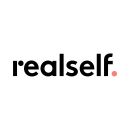“The one thing we know for sure about a plan is that it is going to change.”
This saying is one the team at 98point6 is fond of because it’s true, especially when applied to product roadmaps, said Siddharth Bhatia, director of product at the Seattle-based healthtech startup.
When multiple teams across departments work together to implement new feature add-ons, integrate user feedback and adapt to changing technology, miscommunication often occurs and even the best-laid product roadmaps can fail.
To prevent derailment, aligning key stakeholders from product, design and development — as well as customers — early and often is crucial.
Daily stand-ups and quarterly check-ins allow for internal parties to clarify expectations and delivery dates and confirm a unity of purpose. Setting the groundwork in the initial planning phases by clarifying a “why” behind product initiatives saves team sprints from going off course.
Before creating a product roadmap, Siegel and his team at RealSelf ask a set of questions to specify how the product will impact and support the customer. Their ultimate goal is to launch features daily. To work toward that mission, designers, product managers and engineers talk daily to stakeholders — including customers — to refine ideas during development.
When developing a product roadmap, what steps do you take to ensure there’s alignment across teams from the get-go?
Everyone at RealSelf is passionate about the mission and our customers, and nearly every employee is either a heavy user of our product or spends their day talking to our three-sided marketplace of customers (consumers, providers and brands). As a result, our product team is blessed with a ton of experience and customer data in-house, but we also face complexity in driving alignment across the company. To navigate, we first align every product decision around a standard set of questions including, “What customer problem are we solving?” and, “What is the impact of solving that problem?” We also ask, “Which OKR (objective and key results) does this feature target?” and, “Is this decision a one-way door?”
From there, we follow a standard product discovery and development process that flexes up (multiple rounds of doc and mock reviews) for complex, heavy investments and flexes down for quick experiments. We aspire to launch features daily but don’t yet live up to the aspiration.
How do you maintain that alignment throughout the development cycle?
We bake in alignment to the natural cadence of sprint ceremonies, so as to not create extra work for the team. Product, design and development stay in sync through ceremonies such as daily stand-ups and sprint planning and we host bi-weekly demos to which the entire company is invited to attend.
Additionally, our designers, product managers and engineerings talk daily to their key stakeholders and customers to refine their ideas during development. On our most strategic projects, we also report out during weekly business reviews and will do one-off product deep dives.
We bake in alignment to the natural cadence of sprint ceremonies, so as to not create extra work for the team.”
As project needs change, how do you re-prioritize the product roadmap and keep teams aligned?
I think it’s critical that sprint teams have autonomy over prioritization. Conceptually, that means setting north star OKRs and then trusting the team to deliver against those goals. If an engineer has an impactful idea in the shower, I want that person to be able to make a prioritization decision by breakfast. That’s the freedom we have as a smaller company, and we need to protect it.
That being said, nobody predicted COVID-19 and sometimes you need to pivot company priorities as well. For example, we shifted our entire sprint team focused on bookings to one focused on virtual consultations, and were able to transform the site in under two weeks to a place where our users easily could find and schedule virtual consultations with providers, which had a massive positive impact on our customers and the business.
Bhatia said his team visits their product roadmap quarterly at 98point6. They use that time to measure the outcomes of launched deliverables and use quantitative and qualitative data to list out the next quarter’s investments, which are then presented to stakeholders. After receiving feedback, they present their plan to the entire company for transparency.
When developing a product roadmap, what steps do you take to ensure there’s alignment across teams from the get-go?
When developing our roadmap for the year, we look ahead a few years and envision what we’d like our product experience to look like. From there, we work with a cross-functional group of product managers, designers, engineers and physicians to gather feedback and make sure our goals are aligned.
In addition, we work with leadership to understand the key performance indicators we want to hit for the year and create a set of high-level investments that can help impact those KPIs. Overall, the process of collaboratively developing a vision, having clear goals and enabling teams to develop their backlogs from the ground up helps us stay aligned from the start.
To maintain alignment, we revisit our product roadmap quarterly.”
How do you maintain that alignment throughout the development cycle?
To maintain alignment, we revisit our product roadmap quarterly. We look back at every deliverable launched and measure its impact to see if it achieved the desired outcomes. We look ahead to the detailed investments we want to make for the next quarter and use quantitative and qualitative data to not only answer the “why?” but also the “why now?” We present our findings with a group of stakeholders to gather feedback, and once we’re all aligned, share it out with the entire company. We believe it’s incredibly important for all of our employees to have insight into the trade-offs and priorities we are making so that we are all aligned and committed to the chosen direction.
As project needs change, how do you re-prioritize the product roadmap and keep teams aligned?
We like to say, “The one thing we know for sure about a plan is that it is going to change.” We’ve set up our organization so that teams are as autonomous and self-sufficient as possible. However, in light of COVID-19, we needed to shift our focus to continue to deliver the highest quality care to our patients. To make sure our teams were aligned during this re-prioritization, we set up a daily stand-up so that everyone remains informed and connected. While it’s difficult to make trade-offs, we always prioritize the patient experience and it’s fulfilling to know that we are making a positive difference in people’s lives during these unprecedented times.
Marcum uses team stand-ups to create clear agendas and maintain a shared understanding of priorities at PitchBook. Enlisting the whole product team for huddles are opportunities for everyone to share progress, identify blockers and align on next steps.
When developing a product roadmap, what steps do you take to ensure there’s alignment across teams from the get-go?
Bring the team and stakeholders close to the root customer problem and get them involved as early as possible. Strong alignment requires everyone to be able to clearly articulate the “why” behind a product initiative and feel ownership in the solution. Product managers must find a concise way to highlight the core customer need and ensure the resulting product strategy and roadmap is rooted in that user need.
In practice, this means collaborating closely with design on user research and bringing in engineering leads and stakeholders early to proactively share insights on customer workflows, actual usage behavior, customer interview notes, and other product research. Once an opportunity or theme has been identified, it’s important to set up ongoing check-ins and report out updates to solicit feedback and share progress. The earlier you can consult and include others, the more likely they’ll understand what has been validated and take ownership of working toward the solution.
Nothing beats team stand-ups with clear agendas to keep and maintain a shared understanding of priorities.”
How do you maintain that alignment throughout the development cycle?
Nothing beats team stand-ups with clear agendas to keep and maintain a shared understanding of priorities. Formal project updates and reports are helpful but nothing works as well as having ongoing stand-ups with the product team (design, dev lead and product management) to share progress, identify blockers and align on next steps. Ensuring the right discovery and validation work was completed upfront will help tremendously but regardless, things are going to change as projects evolve. Having key collaboration points and check-ins with both stakeholders and the product team will ensure that new learnings are shared and priorities are adjusted as needed to meet business objectives.
More holistically, we’ve found great success in putting an emphasis on a strong quarterly planning cycle combined with product team sprints every two weeks. Our quarterly planning process ensures we are able to start each quarter with a clear, global roadmap that each team has coordinated and resourced against. Decentralized product teams are able to make prioritization decisions and adjustments throughout the quarter to meet user needs, but centralized visibility to changes and starting each quarter with a dependency-checked plan has greatly improved outcomes.
As project needs change, how do you re-prioritize the product roadmap and keep teams aligned?
Structure teams to reduce the friction of re-prioritization and align them to customer outcomes. Our product strategies each have a set of OKRs that are composed of both target business outcomes and the target usage outcomes that best represent user activation for a given customer use case. We’ve invested in enabling our teams with self-serve tools that allow them to easily measure and monitor outcomes within their given product areas. We have also worked to remove as many dependent teams as technically feasible. This enables product teams to proactively review results and adjust their roadmap, scope or solutioning to a given customer problem quickly.
All teams complete sprint review every two weeks on Friday with key project updates consolidated and reported out, including any roadmap adjustments that are posted to a shared Slack channel with the entire team. This triggers resourcing review and updates our global roadmap with any resulting significant impacts. Teams are able to reprioritize while understanding dependency impacts and broader team changes. We’ve had a lot of fun making our processes better each day and are always on the lookout for other improvements.













